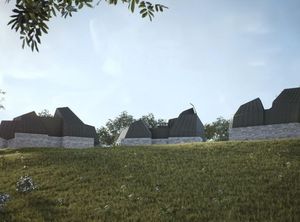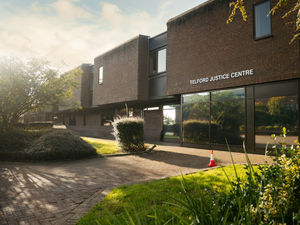Green light for homes plan on former builders’ yard
Housebuilding plans which the ward councillor said had “the worst design I think I have ever seen” have been approved with a chairman’s casting vote.

Lorraine Jones applied to build three homes on a former builders’ yard in Lilleshall and architect Aaron Chetwynd said an “expert panel” agreed they represented “exceptional quality and innovative design”.
Church Aston and Lilleshall councillor Andrew Eade told the Telford and Wrekin Planning Committee that was “very subjective” and urged them to refused permission to build “this sort of nonsense”.
A council planning officers’ report recommended approval, but the eight-member committee voted 3-3, with two abstentions. Chairman Charles Smith used his casting vote in favour.
The planners’ report said: “The site is roughly triangular in shape and accessed off Barrack Lane.
“This application seeks full permission for the construction of three detached dwellings and a communal building for shared plant room.”
It said that the site is in a rural area, where Telford and Wrekin planning policy usually only supports “limited infill housing” - a rule that would not cover sites like the Barrack Lane yard.
However, it added, “policy HO10” allows four exceptions and Mrs Jones’ application relied on the third, which accommodates proposals that “represent exceptional quality or innovative design”.
“The application also proposes 12 parking spaces, a range of sustainable building methods and technologies, including electric vehicle charging points for each building, habitat enhancements and appropriate noise mitigation methods,” the report added.
Lilleshall Parish Council objected to the proposal and member David Shaw said the officers report “gives limited consideration” to a neighbourhood plan he and his colleagues “worked very hard for years to get accepted”.
“The scheme is not consistent with prevailing scale or materials to reflect local character and is accessed over private land via a farm track,” he said.
The report summarised four separate attempts, between 1981 and 2016, to build homes on the site. These were all refused by the council and, in the two cases where the applicants appealed, that refusal was backed by the Planning Inspectorate.
“What we’re faced with now is a naked attempt to use our own policy, HO10, to circumvent our previous refusals,” Cllr Eade said.
“Despite a panel of unknown individuals telling us this is an ‘innovative design of exceptional quality’ and despite the officers’ recommendation that this should be accepted, the choice is really up to yourselves.
“Have a look at the drawings yourself. It is exceptionally bad and without doubt the worst design I think I have ever seen.
“How on earth can we contemplate being told by individuals with no connection to this borough whatsoever that we should build this sort of nonsense in our rural area?”
Honnington resident Jonathan Warrington spoke in favour of the plans, saying he had seen a lot of change in his 53 years living in the Lilleshall parish. These included the disappearance of village shops, the conversion of farms into housing and the demolition of his former junior school.
“Of course, these tug at my heartstrings too, but I’ve had it better than my parents, certainly better than my grandparents,” he said.
“Historians look back at the Lilleshall Company and how it brought prosperity and progress to people all around the world. I hope historians will again look back at Lilleshall and how it was again at the forefront of solving tomorrow’s challenges.”
Mr Chetwynd, representing Mrs Jones, said: “It is our intention and that of our client, Lorraine, not to upset the community but to contribute in a positive way to the future of Lilleshall.
“The design has been through a rigorous design review process with an expert panel made up of architects and landscape architects who have deemed the proposal represents exceptional quality and innovative design.
“The proposed site is a small, almost micro, development of three highly sustainable family houses set within a rewilded landscape.
“This methodology is required now more than ever to tackle climate change and the climate emergency and we feel the application is exactly in line with the forward-thinking Telford and Wrekin green agenda.”





